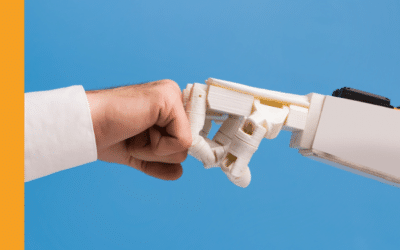Even if you’ve been part of a certain company or specific industry for years, there is a good chance that things aren’t the same as they were a decade or so ago. In fact, even over a length of time as short as the past 12 months, certain aspects of the role, organisation or sector may have changed dramatically.
Nowadays, business moves forward incredibly quickly and it is imperative to move with the times. Entrepreneurs and enterprises staying ahead of the curve are bound to be better prepared and more likely to succeed, while those left trailing behind will ultimately fail.
But whatever the future may have in store, how can you and your employees increase the chance of prosperity and reduce the risk of collapse? The answer for many is continual learning. By providing ongoing training at various levels, an organisation can carry out present-day operations to the best of its abilities while adapting effectively and efficiently to what lies ahead.
Levels of continual learning
Even though a business with good intentions may wish to implement continual learning through comprehensive training courses, which involve every single department or member of staff, it is best to approach this type of ongoing development at individual, team and organisational levels.
Individual continual learning
The most basic way to introduce continual learning is at an individual level. Employees can receive ongoing training that changes their behaviour at work while acquiring new skills and greater knowledge. From learning how to handle certain situations to gaining competency in other areas, continuous teaching can achieve a number of things.
However, this type of training requires a lot of time and effort together with the individual’s willingness and inclination to learn. Investing in a course for a single person could be an expensive exercise, especially if the employee does not want to develop or progress in the first place.
Team continual learning
Depending on the type of organisation, collective learning in a team can be a lot more efficient and appropriate than on an individual level. This type of training will also teach employees new skills or expertise, but features greater support in the form of feedback, experimentation, question and answer sessions, role-playing and group discussions.
While teamwork can help find solutions to problems and improve decision making, it isn’t always an effective way to teach employees. Certain members of staff may already be familiar with certain topics and themes, while others might learn at a quicker pace compared to the rest of the group.
Organisational learning
Due to some of the problems or issues associated with continual learning at an individual and team level, several organisations are making it an integral part of their company culture. Introducing new policies, systems and procedures may take time to implement and could be met with some resistance, but it can also transform the fortunes of a business.
If continual learning is a core component of an organisation’s culture, then it will eventually trickle down to teams and individuals. Members of staff are sure to be more willing to take part in training and tuition if it is an integral part of the business they work for.
How to implement continual learning
Suddenly deciding that your business now promotes and performs continual learning doesn’t cut it, as you’ll need to make a few fundamental changes to the way teaching and training is approached. However, this can be achieved by adopting Wranx’s comprehensive training solution, which has been set-up to provide employees with continual access to tuition and instruction.
Introduce ongoing performance management – By finding out where the business is performing well and doing badly, training programs can be implemented accordingly. From defining standards and expectations at all levels to developing teaching systems and identifying shared objectives, you will always know where more training is required.
This is similar to Wranx Drills, which identify the areas where employees are lacking knowledge. If the respondent does not have a solid grasp of a certain subject, we will ask the same question the next day. But if they do understand the topic, we won’t bring it up again. This is a form of accelerated learning, which has been proven to cement knowledge in your long-term memory.
Create empowerment and authority
Giving employees the tools and resources to constantly learn will give them ownership over their own knowledge acquisition. As a result, they will be more willing to grow and develop within the organisation.
Seeing as our solution is available on desktop and mobile, employees can take part in training at a time and place that suits them. Giving members of staff the opportunity to learn on the commute to work, during lunch or in the comfort of their home promotes and encourages individual freedom.
Adopt effective teaching methods
Approaching continual learning with traditional training techniques or existing frameworks is far from ideal, as these are usually set-up with one-off coaching sessions in mind. Therefore, find a system or solution that facilities training on a regular basis, where employees are more likely to acquire and retain information effectively.
As mentioned previously, Wranx Drills use a form of accelerated learning known as spaced repetition, which is much more effective than traditional training techniques. By introducing new themes or topics over time and not overloading employees with too much information, your members of staff will have a greater chance of remembering crucial subjects.
Make training fun and engaging
Even if you’ve introduced a culture of continual learning, there may be some employees that reject this ideology. To them, training will evoke feelings and emotions of dread, fear, boredom and frustration. But if you make training fun and engaging, they will soon change their ways.
Wranx uses gamification to get employees excited about studying and learning. With over 300 achievements to win, members of staff strive to work hard, learn more and consequently enjoy themselves by playing scientifically developed educational games.
Continual learning is an ideology or objective that several businesses aspire to achieve, but without a fundamental change at an organisational level, it is incredibly difficult to implement. But with the right approach, it can be successful executed and bring about favourable results.





